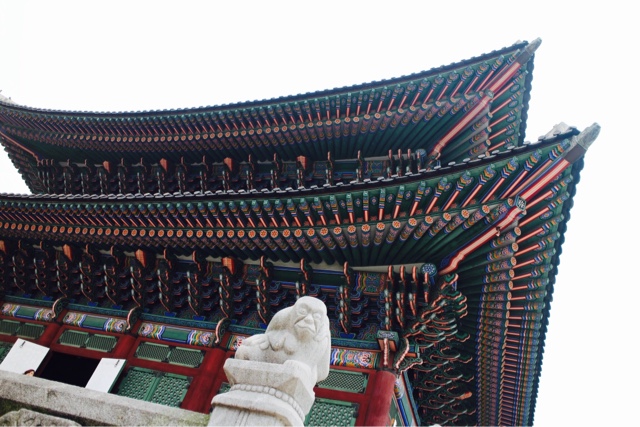Hello readers, still following my Sydney's post? Good2.. :=)
Ok, I continue from my last post where we went back to Circular Quay for close encounter with the Sydney Opera House and Sydney Harbour Bridge.
From Paddy's Market to Sydney Opera House took about 15 minutes. We parked our car at Macquarie St. next to the Royal Botanic Garden Sydney. A bit about The Royal Botanic Garden Sydney, it is a major botanical garden located in the heart of Sydney, Australia. Opened in 1816, the garden is the oldest scientific institution in Australia and one of the most important historic botanical institutions in the world. It is open every day of the year and access is free. The famous Mrs Macquarie's Chair also located at this park. The Mrs Macquarie's Chair, otherwise known as Lady Macquarie's Chair, provides one of the best vantage points in Sydney. The historic chair was carved out of a rock ledge for Governor Lachlan Macquarie's wife, Elizabeth as she was known to visit the area and sit enjoying the panoramic views of the harbour.
Since our remaining time here was limited, we didn't manage to visit the Botanical Garden. We straight to our main propose here to the Sydney Opera House.
(ii) Sydney Harbour Bridge
Instantly recognisable, the Sydney Harbour Bridge is the world's tallest steel arch bridge, connecting the northern suburbs of Sydney with the city centre. It is also a vital link in Sydney's transport infrastructure, with more than 200,000 cars travelling its length each day.
There are many ways to experience this iconic landmark. One of the most popular is with BridgeClimb Sydney, which has been running since 1998. Learn about the fascinating history of the bridge and its place in the city as you make the exhilarating climb to the top. The open vista provides an unforgettable experience, and the scope of the view is spectacular. We were interested but not this time :=( But in case you are interested, here’s the link for more information : http://www.bridgeclimb.com.
More and more photos of Harbour Bridge!!
(iii) The Sydney Opera House
The Sydney Opera House is Australia's most recognisable building and is an icon of Australia's creative and technical achievement. Since its completion in 1973 it has attracted worldwide acclaim for its design and construction, enhanced by its location within a superb harbour setting.
The design of the building, with its soaring white roof shell shaped sails atop a massive red granite platform, has been internationally acclaimed as an architectural icon of the 20th century. As a dominant sculptural building that can be seen and experienced from all sides, it is the focal point of Sydney Harbour and a reflection of its character.
It is placed right at the end of Bennelong Point, juxtaposed to the harbour and completely to scale in relation to the Harbour Bridge, the sandstone cliff face, Macquarie Street and Circular Quay. Viewed from a ferry, from the air, or by approach on foot, the vision is dramatic and unforgettable.
We took lots of mandatory touristy photo with the Opera House when one is there.
And not forgetting with the "Jalur Gemilang"!
At 4pm we started to walk back to our car as we needed to return the car back to the office at 5pm.
I shall continue our very last moment at Sydney in next post. Stay Tuned.
Sydney, The Land of OZ Fast Link Here
1) Day 0 – The Journey KL to Sydney and 1st Night at Ibis Hotel
2) Day 1 – Pick up Rental Car and Start of Grand Pacific Drive
3) Day 1 – GPD (Otford Lookout, Stanwell Park and Cliff Bridge)
4) Day 1 – GPD (Wolonggong & Kiama)
5) Day 1 – Night at Windang Beach Tourist Park
6) Day 2 – Trip to Blue Mountain
7) Day 2 – Echo Point Lookout and Scenic World, Blue Mountain
8) Day 2 – Night at Bass Hill Holiday & Residential Park
9) Day 3 – Darling Harbour / Waterfront
10) Day 3 – Sydney Wild Life Zoo
11) Day 3 – Madam Tussauds Sydney
12) Day 3 – Ferry Ride, Sydney Opera House and Harbour Bridge at Night
13) Last Day – Checked Out and Shopping Paddy Market
15) Last Episode Sydney












































































